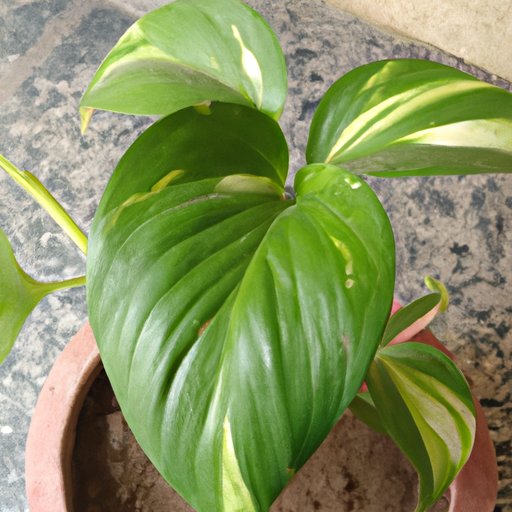
I. Introduction
Money plant, also known as Devil’s ivy, is a popular and easy to care for indoor and outdoor plant. It is native to Southeast Asia and has been a favorite among gardeners for its beautiful appearance. Money plant is not only grown for its aesthetic value but is also significant for its air-purifying properties. In this article, we will explore the various techniques involved in taking care of money plant.
II. Watering and Lighting Needs
Money plants love moisture, but they do not like to be waterlogged, so make sure the soil has good drainage. Water the plant only when the soil is dry to the touch. Overwatering can lead to yellowing of leaves, root rot, and even death of the plant. During peak summers, it is advised to water the plant twice a week. Keep away from direct sunlight or extreme temperatures like south or west-facing windows, and keep the plant in a shaded or semi-lit area. In winters, place the money plant in a place with bright and filtered light.
III. Soil Type and Fertilizing
The soil type plays a vital role in the growth of money plant. The soil should be well-drained and light. Always use a soil mix that is suitable for indoor plants or a well-draining potting mix. Use a pot with a drainage hole to prevent waterlogging. Use diluted liquid fertilizer once a month during the growing season, and refrain from over-fertilizing as it may lead to yellowing of leaves and root burn.
IV. Pruning and Trimming
Pruning is an essential technique for ensuring the growth and healthy appearance of money plant. Prune regularly to manage growth and keep the plant within your desired boundaries. Prune the vine up to the node just above the leaf. The best time to prune is during the first weeks of spring, when the plant is beginning to grow. Pruning will also help prevent insect infestations and promote the growth of new shoots. Trim the long and straggly stems, and remove all the dry and wilting leaves and stems.
V. Propagating the Money Plant
Money plant is easy to propagate through stem cuttings. Use the stem cuttings of healthy and mature plants for propagation. Cut a healthy stem from the vine and place it in a jar of water. Ensure that only the submerged stem will produce roots. Change the water frequently, and roots will appear within a week. Once roots have developed, plant the stem in a pot containing suitable potting soil and water it thoroughly.
VI. Common Problems and Solutions
The most common problem that money plants face is due to over-watering. Yellowing of leaves is an indication of overwatering. Make sure to water when the soil is dry. Sudden changes in temperature, such as moving the plant outdoors in extremely hot or cold weather, can lead to sunburn. Keep the money plant in a semi-lit area to avoid this. Infestation of pests like spider mites and mealybugs can be treated using neem oil or organic insecticides. Remove the affected leaves or cuttings to prevent further infestation.
VII. Conclusion
Money plant is a popular plant for both indoor and outdoor gardening, and it requires minimal care. Proper watering and lighting, soil type and fertilization, and pruning and trimming are some of the crucial techniques involved in maintaining and caring for the money plant. Propagation through stem cuttings is an easy way to expand your money plant collection, and common problems such as leaf yellowing and pest infestations can be addressed through simple actions. By following these tips and techniques, you can ensure that your money plant remains healthy and vigorous, and its vibrant greenery adds beauty to your home.
Last tip, always keep an eye on your plants and check on them frequently to keep up with their development.




